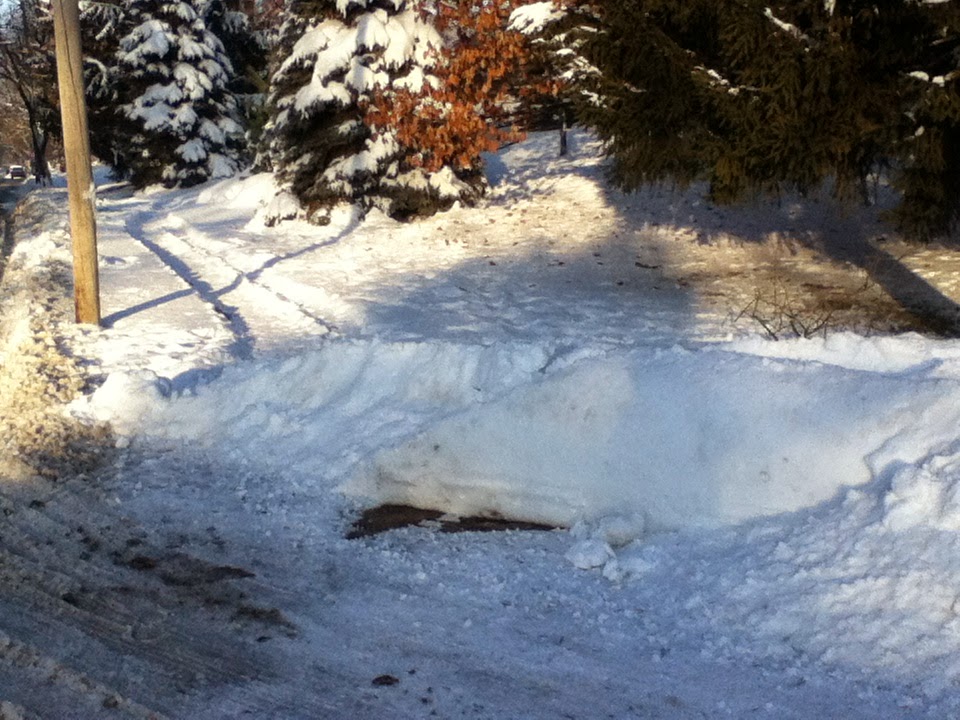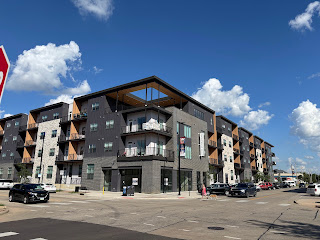The topic of payday lenders came up twice last week, once in the New York Times and the next day in an urban planner's presentation to Coe's Political Science Club. Payday lenders are those who provide cash to individuals without requiring proof of creditworthiness. They compensate for these high risk loans by charging high levels of interest--171 percent annually, in one case cited by the Times. According to the U.S. Consumer Financial Protection Bureau, the median loan amount was $350, onto which lenders tacked a median amount of $458 in fees. They also have recourse to repossession, of course. Rolling over loans--borrowing more money to pay off the first loan--is common, and lenders rely heavily on repeat business.
Most people who use payday lenders need money for everyday expenses like rent and transportation. Here, for example, is the story of Eboni Maze, a low-wage worker in Wichita, Kansas, told by the New York Times:
[A] single loan — money borrowed against her car, a 2012 Kia, so she could pay her rent — still haunts her more than three years later. Her car was repossessed after she could not keep up with the payments on the loan, which had an interest rate of more than 150 percent. To afford the down payment on another car, she took out a payday loan. When she could not pay that one off, she took out another.Given my middle class background, I have never used a payday lender. I did by accident use a check cashing service once. (The activities are closely related, and many payday lenders offer both services.) Traveling in Denver awhile ago, long enough ago that I was carrying travelers' checks, I saw a check cashing operation that seemed like a convenient way to turn a travelers' check into normal money. I don't remember the fee assessed to cash a $100 travelers' check, but it was appalling. I realized immediately I had been taken, and had paid for a little education in life.
Payday lenders thrive because their business model is based on making money when vulnerable people stumble. Interest rates and fees multiply the original cost of the loan. For increasingly popular auto-title loans, one in six borrowers loses their car. Would it be inflammatory to call such lenders exploitative? It certainly amounts to a tax on the poor. Additionally, the presence payday loan shops makes for a depressive vibe in a neighborhood. One business might not make much difference, but once you've got a cloud of payday lenders, pawn shops, discount cigs and booze, and fast food restaurants, you're sending a message that this is not a pleasant place, that no one wants to be here. It's the opposite of impelling form. Repelling form?
Can we regulate payday lenders out of existence? Probably not. They are businesses, after all, represented at state capitals by skilled lobbyists, supported by private equity firms, and aren't doing anything illegal. We could make their activity illegal, of course, but at the risk of writing overbroad legislation that would create difficulties for lenders we like. We could, and perhaps should, limit the amount of interest they can charge, or require a grace period before repossession, but my hunch is that the degree of restriction required to have much beneficial impact would just drive them underground. For here is the conundrum: There is a need for their services. Poor people borrow from payday lenders, not because they're hypnotized, or under any illusion about the risks. They borrow because they desperately need money--they are poor, after all--and they don't have the credit to borrow from a bank. Addressing the problem of payday lenders by somehow forcing them out of existence is unlikely to work. A better approach is to eliminate the need for them... in other words, to deal directly with the conditions of poor people.
As we cast about for this better approach, we run across this interesting fact: Of the 12 payday lenders listed in the Cedar Rapids-Marion phone book, only one is located in the core neighborhoods around downtown. Including pawnbrokers, listed separately but offering the same services...
...still makes it only four out of 16. The others are divided between the areas around Blairs Ferry Road NE, Edgewood Road West, and 7th Avenue in Marion... in other words, what were recently the edges of town, the first or second round of sprawl that have long since been superseded. I don't want to leap to conclusions about this, because I don't know how solid my data collection method is, or how much if any effect zoning has had. But I do know poverty can be found in various parts of the metropolitan area, not just in the oldest neighborhoods. And it stands to reason that the poor who face the most immediately pressing transportation costs would be the ones living on the outskirts.
The clearest solution to any problem involving poverty is economic opportunity. In Michael Dukakis's doomed 1988 presidential campaign, he talked about "good jobs at good wages." I don't think he had any clear ideas how to get those, and I don't think I do either, but dog-gone it, getting America to the point where there are career opportunities for people at a broad variety of skill sets and levels would go far to mitigating this symptom of the no-win situation the poor get stuck in.
Short of that, one thing we can start doing immediately is better urbanism: design cities so that cars are optional. If people could walk to work, school and shopping, that removes a huge set of expenses from their monthly budget. It's like getting a $10,000 a year raise, which equals $5.00 an hour for a person working 40 hours a week. That's without regulating wage increases, or enacting a huge increase in welfare spending. By thus reducing the need for the services of payday lenders, that would go far to easing the blight they cause on the physical and ethical landscapes.
Not to say implementing urbanism will be easy, either. Just that it beats the alternatives, the extremes of either heavy-handed regulation or wishin'-and-hopin'.
SOURCES
Ben Kaplan, "This Week's #Urbanist Goodreads Have the Motor Revving," We Create Here, 13 February 2015, http://www.wecreatehere.net/2015/02/13/weeks-urbanist-goodreads-motor-revving/
Jessica Silver-Greenberg and Michael Corkery, "Rise in Loans Linked to Cars Is Hurting Poor," New York Times, 25 December 2014, http://dealbook.nytimes.com/2014/12/25/dipping-into-auto-equity-devastates-many-borrowers/?_r=1&utm_content=buffere6ae3&utm_medium=social&utm_source=twitter.com&utm_campaign=buffer
Jessica Silver-Greenberg, "Consumer Protection Agency Seeks Limits on Payday Lenders," New York Times, 9 February 2015, A1, http://dealbook.nytimes.com/2015/02/08/consumer-protection-agency-seeks-limits-on-payday-lenders/

















